Aerodynamic Research on the Wing Design of a 3000 kg Hexa Tiltrotor eVTOL †
Abstract
1. Introduction
2. Development of Research Questions
3. Methodology
3.1. Airfoil Selection
- (1)
- Among the 5-digit series NACA airfoils, NACA 23015 has the highest maximum lift-to-drag ratio;
- (2)
- Among the NACA 6-series airfoils, NACA 63.2-615 has the highest maximum lift-to-drag ratio;
- (3)
- Among the natural laminar flow series airfoils, NLF(1)-0416 and NLF(1)-0215F have the highest maximum lift-to-drag ratio;
- (4)
- Among the high lift series airfoils, MS(1)-0313 and GAW-2 have the highest maximum lift-to-drag ratio. However, considering that the thickness ratio of the two airfoils is only 13%, MS(1)-0317 and GAW-1 are used.



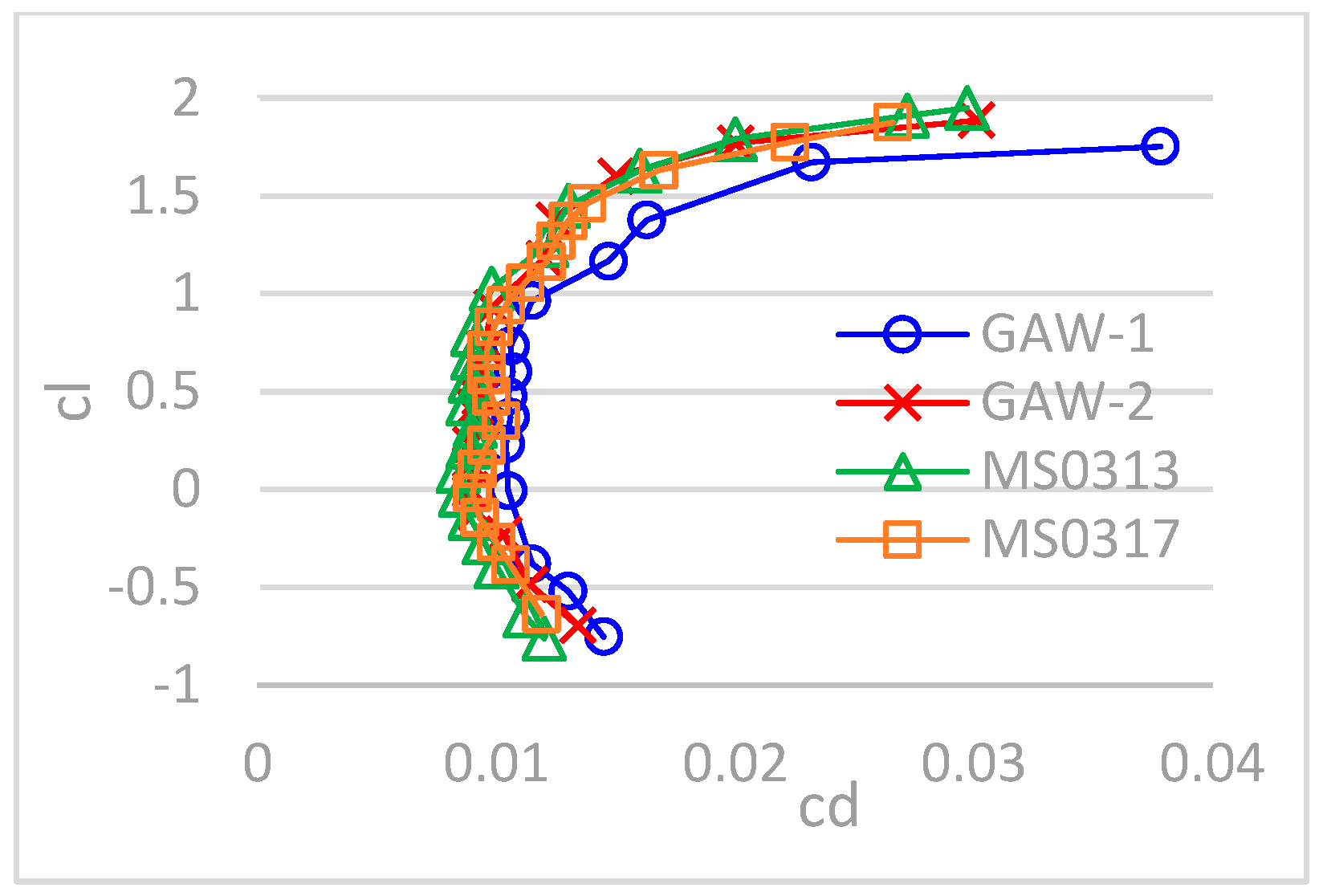
3.2. Analysis of the Wings’ Geometric Parameters
- (1)
- Wing area:
- (2)
- Wing span:
- (3)
- Wing tip and root chord:
- (4)
- Wing position:
3.3. Preliminary Design of the Tail
3.4. Modeling
3.5. Mesh
3.6. Settings
| Fluid | Air |
| Density | 1.1117 kg/m |
| Temperature | 281.65 K |
| Pressure | 89,876 Pa |
| Viscosity | 1.7579 × 10−5 N∙s/m |
| Velocity | 300 km/h |
| Turbulence Model | Shear Stress Transport (SST) [9] |
| Fuselage Angle of Attack | 0° |
4. Results and Analysis
4.1. Results
- (1)
- The GAW-1 airfoil scheme has the maximum lift-to-drag ratio of 16.9 among the high lift airfoils;
- (2)
- The NLF(1)-0215F airfoil scheme has the maximum lift-to-drag ratio of 18 among the natural laminar flow airfoils;
- (3)
- The lift-to-drag ratio of the NLF(1)-0215F airfoil scheme reaches its maximum value at a wing incidence angle of 3°–4°, while other schemes reach their maximum value at a wing incidence angle of 5°;
- (4)
- The lift-to-drag ratio decreases significantly after the wing incidence angle of the NLF(1)-0215F scheme exceeds 4°. Therefore, it is recommended that the wing incidence angle of NLF(1)-0215F scheme is 3°.
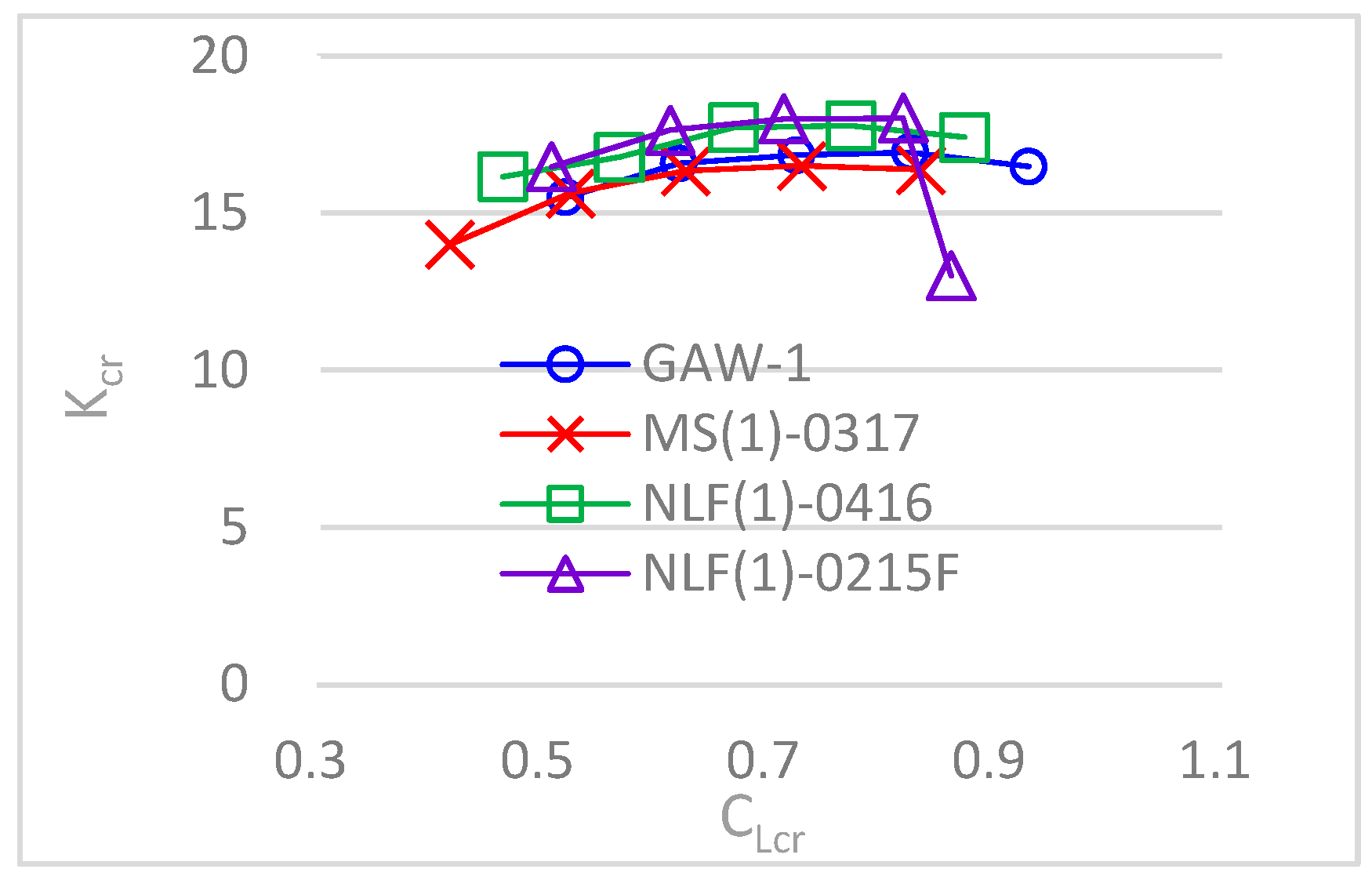

4.2. Analysis
- R range, km
- Kcr lift-to-drag ratio in cruise stage
- ηm motor efficiency
- ηp propeller efficiency
- WE empty weight
- Wcrew crew weight
- Wtfo weight of trapped fuel and oil
- WPL payload
- SE energy density of the battery, W∙h/kg
5. Discussion and Conclusions
Author Contributions
Funding
Institutional Review Board Statement
Informed Consent Statement
Data Availability Statement
Acknowledgments
Conflicts of Interest
References
- Abbott, I.H.; Von Doenhoff, A.E.; Stivers, L., Jr. Summary of Airfoil Data. NACA REPORT, No.824. 1945; pp. 70–88. Available online: https://ntrs.nasa.gov/search?title=Summary%20of%20Airfoil%20Data&page=%7B%22from%22:0,%22size%22:25%7D (accessed on 20 July 2024).
- Somers, D.M. Design and Experimental Results for a Natural-Laminar-Flow Airfoil for General Aviation Applications. NASA TECHNICAL PAPER, No.1861. 1981; pp. 68–69. Available online: https://ntrs.nasa.gov/search?title=Design%20and%20Experimental%20Results%20for%20a%20Natural-Laminar-Flow%20Airfoil%20for%20General%20Aviation%20Applications&page=%7B%22from%22:0,%22size%22:25%7D (accessed on 20 July 2024).
- McGhee, R.J.; Viken, J.K.; Pfenninger, W.; Beasley, W.D.; Harvey, W.D. Experimental Results for a Flapped Natural-Laminar-Flow Airfoil with High Lift-Drag Ratio. NASA TECHNICAL MEMORANDUM, No.85788. 1984; pp. 17–48. Available online: https://ntrs.nasa.gov/search?title=Experimental%20Results%20for%20a%20Flapped%20Natural-Laminar-Flow%20Airfoil%20with%20High%20Lift-Drag%20Ratio&page=%7B%22from%22:0,%22size%22:25%7D (accessed on 20 July 2024).
- Somers, D.M. Design and Experimental Results for a Flapped Natural-Laminar-Flow Airfoil for General Aviation Applications. NASA TECHNICAL PAPER, No.1865. 1981; pp. 93–94. Available online: https://ntrs.nasa.gov/search?title=Design%20and%20Experimental%20Results%20for%20a%20Flapped%20Natural-Laminar-Flow%20Airfoil%20for%20General%20Aviation%20Applications&page=%7B%22from%22:0,%22size%22:25%7D (accessed on 20 July 2024).
- McGhee, R.J.; Beasley, W.D.; Somers, D.M. Low-Speed Aerodynamic Characteristics of a 13-Percent-Thick Airfoil Section Designed for General Aviation Applications. NASA TECHNICAL MEMORANDUM, No.X-72697. 1975; pp. 28–29. Available online: https://ntrs.nasa.gov/search?title=Low-Speed%20Aerodynamic%20Characteristics%20of%20a%2013-Percent-Thick%20Airfoil%20Section%20Designed%20for%20General%20Aviation%20Applications&page=%7B%22from%22:0,%22size%22:25%7D (accessed on 20 July 2024).
- McGhee, R.J.; Beasley, W.D. Low-Speed Aerodynamic Characteristics of a 17-Percent-Thick Airfoil Section Designed for General Aviation Applications. NASA TECHNICAL NOTE, No.D-7428. 1973; pp. 44–45. Available online: https://ntrs.nasa.gov/search?title=Low-Speed%20Aerodynamic%20Characteristics%20of%20a%2017-Percent-Thick%20Airfoil%20Section%20Designed%20for%20General%20Aviation%20Applications&page=%7B%22from%22:0,%22size%22:25%7D (accessed on 20 July 2024).
- McGhee, R.J.; Beasley, W.D. Low-Speed Aerodynamic Characteristics of a 13-Percent-Thick Medium-Speed Airfoil Design for General Aviation Applications. NASA TECHNICAL PAPER, No.1498. 1979; pp. 39–40. Available online: https://ntrs.nasa.gov/search?title=Low-Speed%20Aerodynamic%20Characteristics%20of%20a%2013-Percent-Thick%20Medium-Speed%20Airfoil%20Design%20for%20General%20Aviation%20Applica-tions&page=%7B%22from%22:0,%22size%22:25%7D (accessed on 20 July 2024).
- McGhee, R.J.; Beasley, W.D. Low-Speed Aerodynamic Characteristics of a 17-Percent-Thick Medium-Speed Airfoil Design for General Aviation Applications. NASA TECHNICAL PAPER, No.1786. 1980; pp. 39–40. Available online: https://ntrs.nasa.gov/search?title=Low-Speed%20Aerodynamic%20Characteristics%20of%20a%2017-Percent-Thick%20Medium-Speed%20Airfoil%20Design%20for%20General%20Aviation%20Applica-tions&page=%7B%22from%22:0,%22size%22:25%7D (accessed on 20 July 2024).
- Menter, F.R. Two-equation eddy-viscosity turbulence models for engineering applications. AIAA J. 1994, 32, 1598–1605. [Google Scholar] [CrossRef]
- Roskam, J. Airplane Design Part 1: Preliminary Sizing of Airplanes; Roskam Aviation and Engineering Corporation; Design, Analysis and Research Corporation: Lawrence, KS, USA, 1985; pp. 5–7. Available online: https://www.amazon.com/Airplane-Design-Part-Preliminary-Airplanes/dp/188488542X (accessed on 20 July 2024).
- Nicolai, L.M.; Carichner, G.E. Fundamentals of Aircraft and Airship Design: Volume I—Aircraft Design; AIAA Education Series; American Institute of Aeronautics and Astronautics: Reston, VA, USA, 2010; pp. 124–125. Available online: https://arc.aiaa.org/doi/book/10.2514/4.867538 (accessed on 20 July 2024).
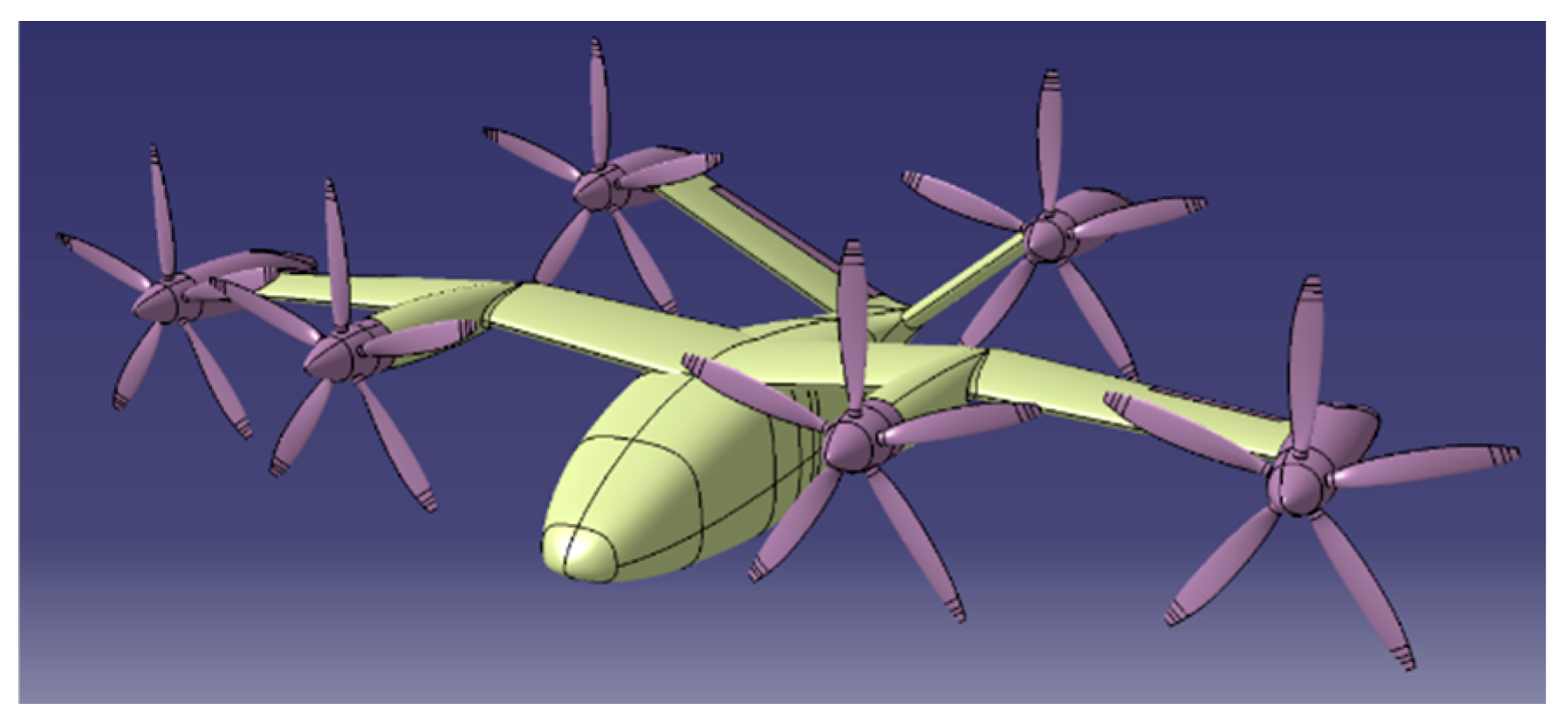
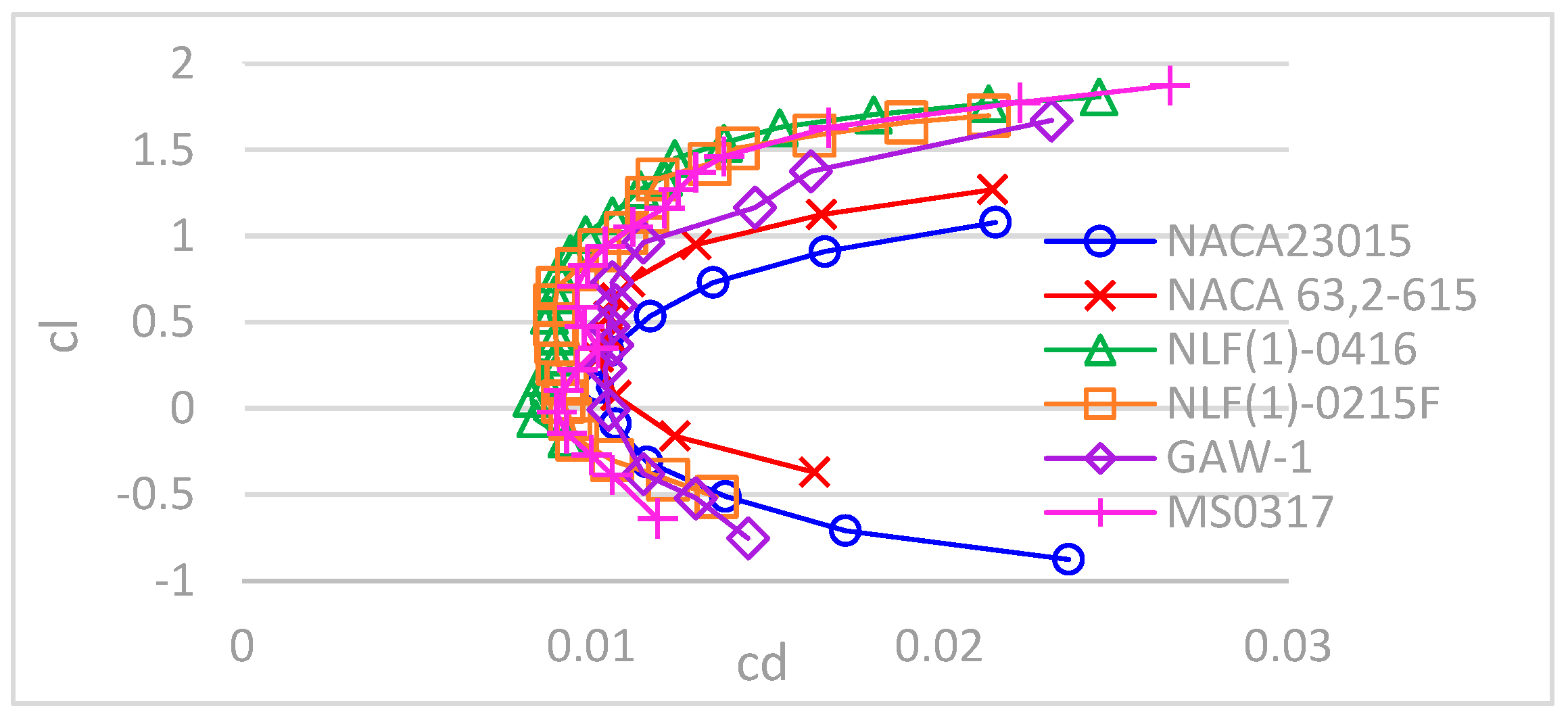
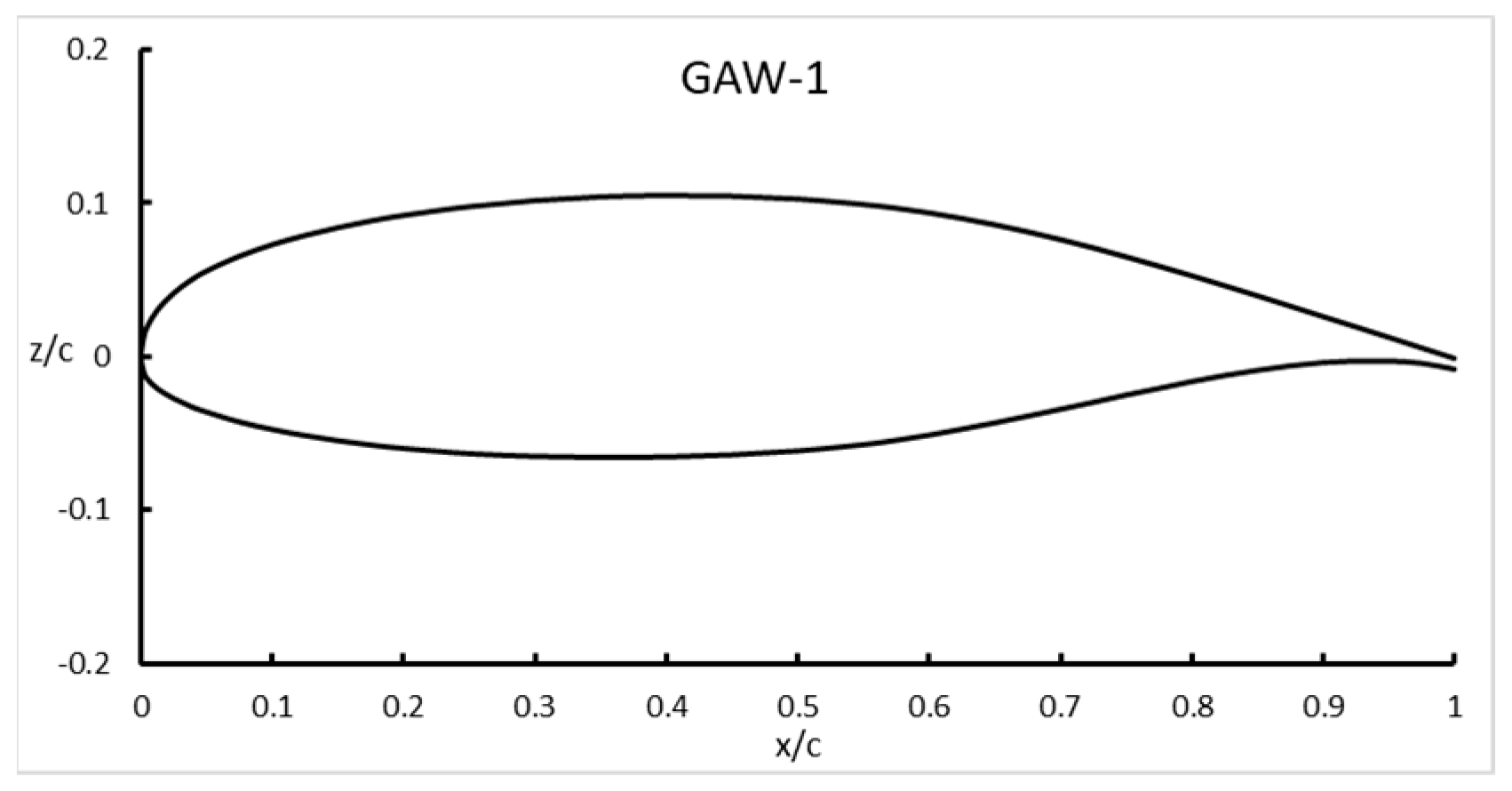
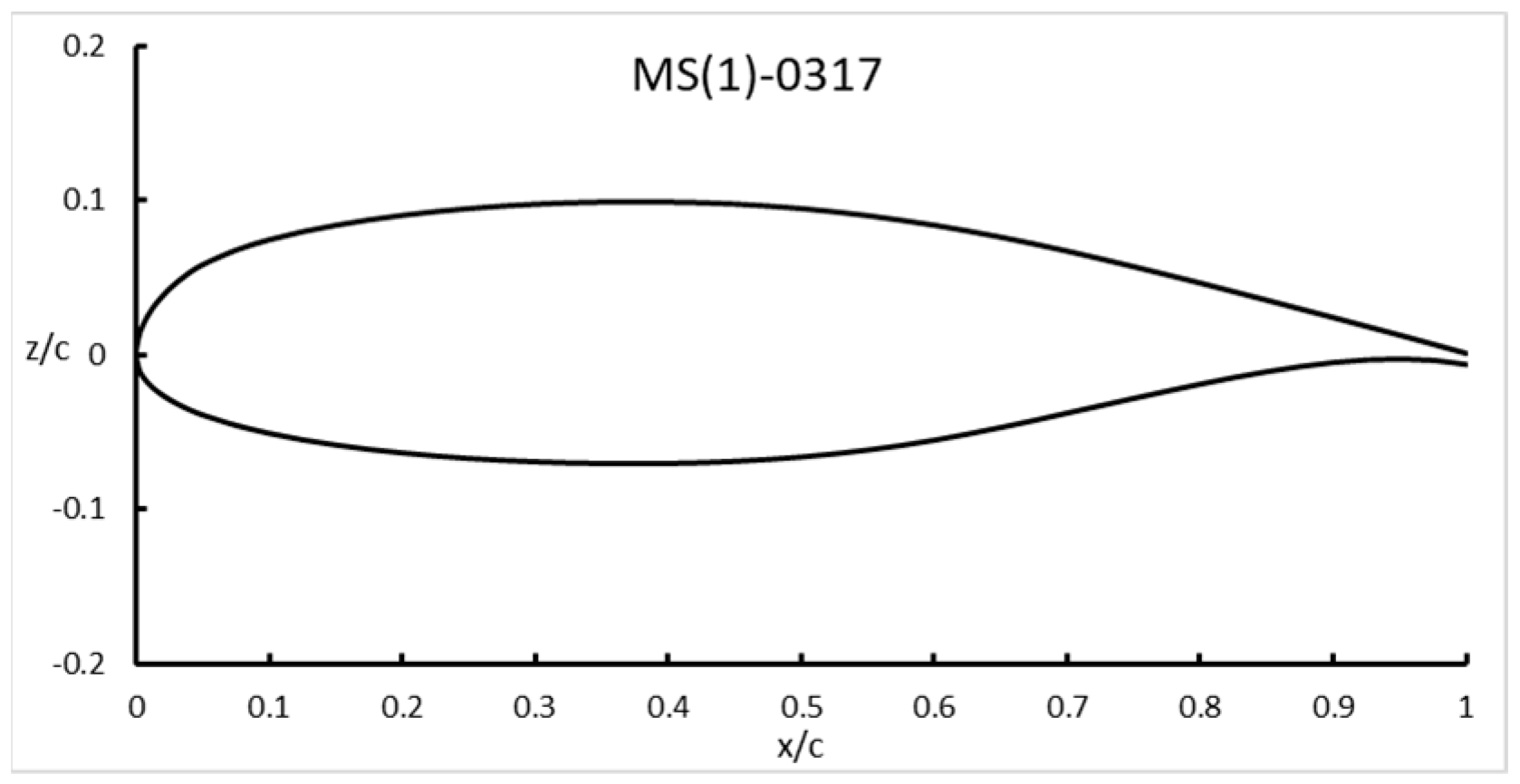
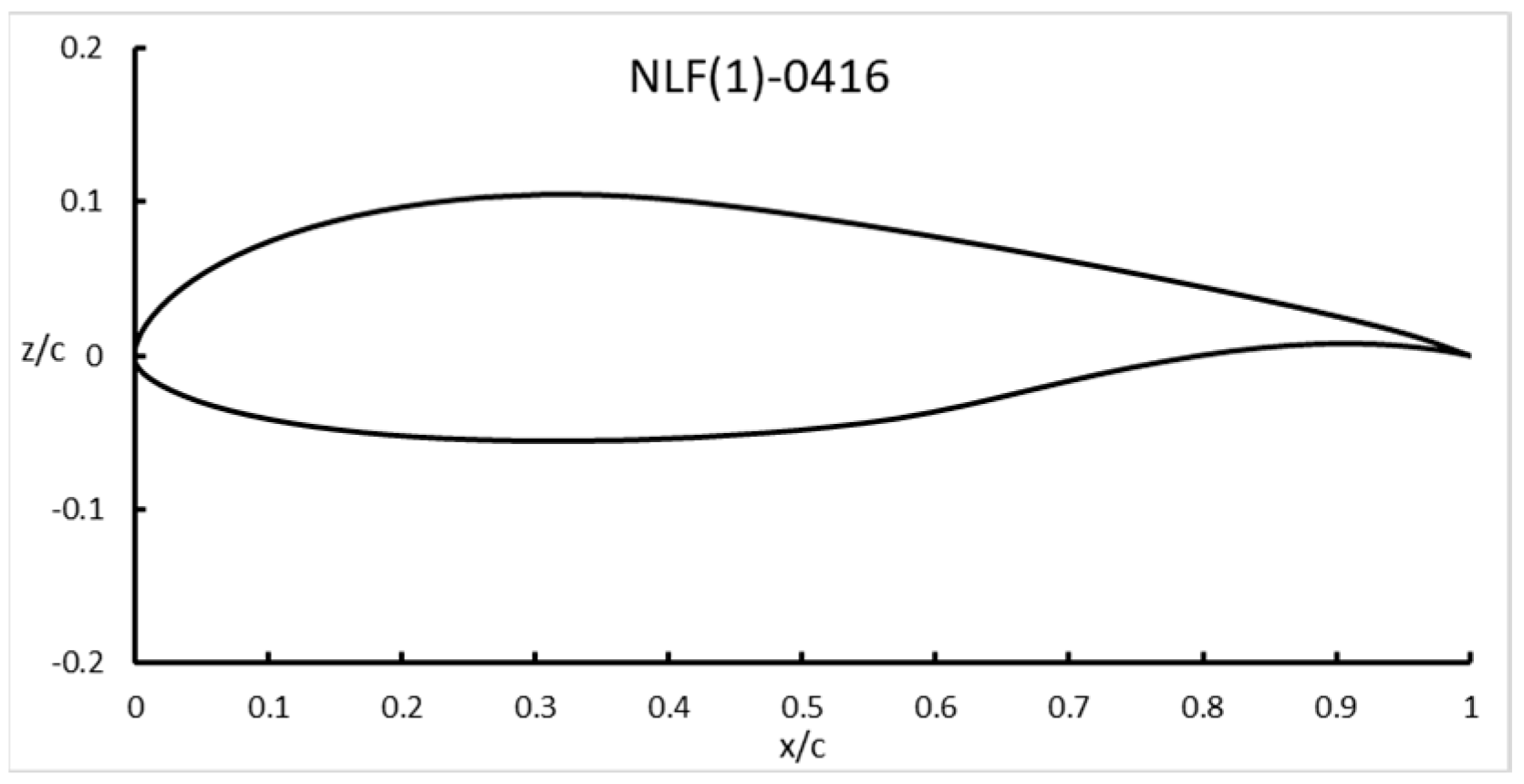
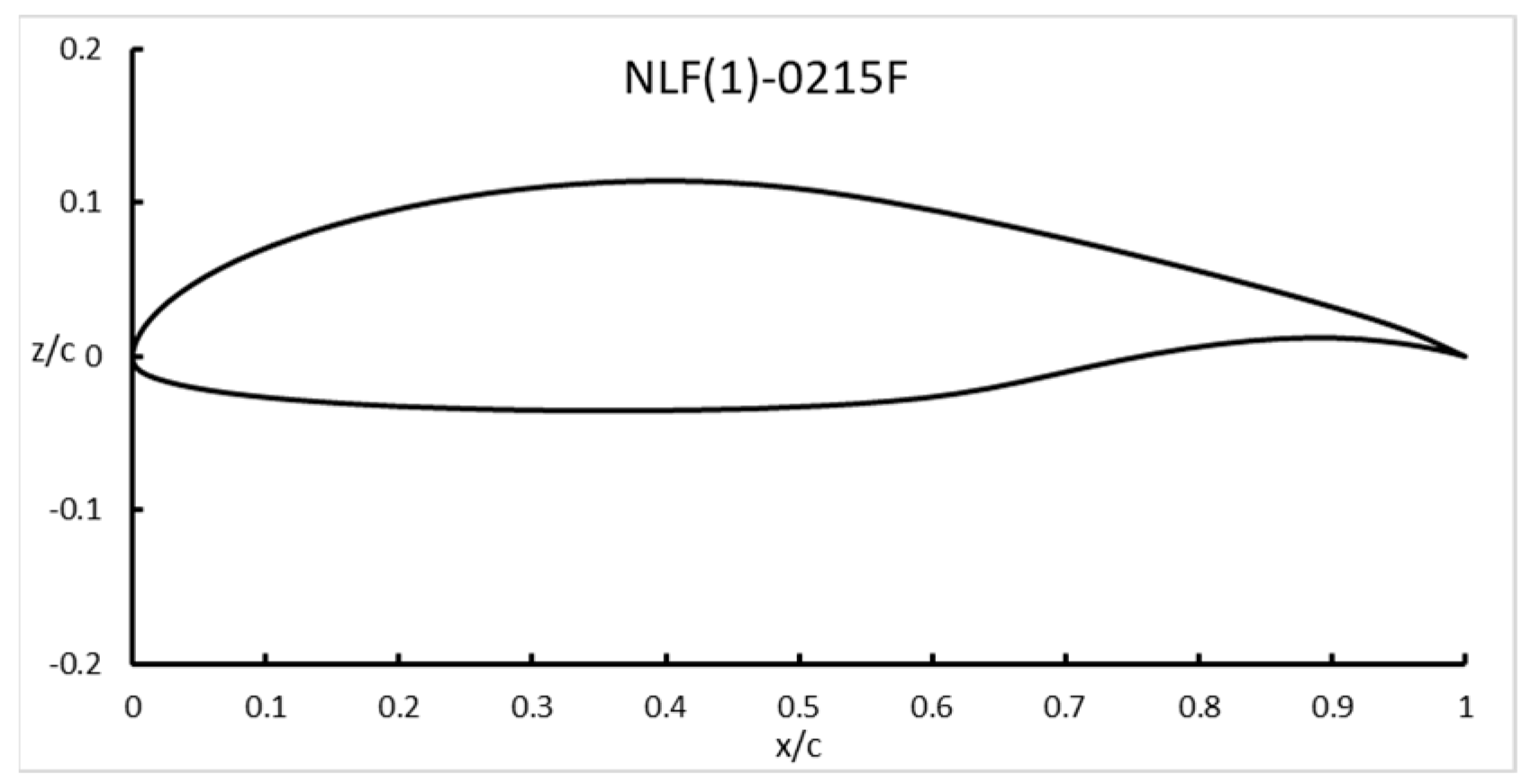
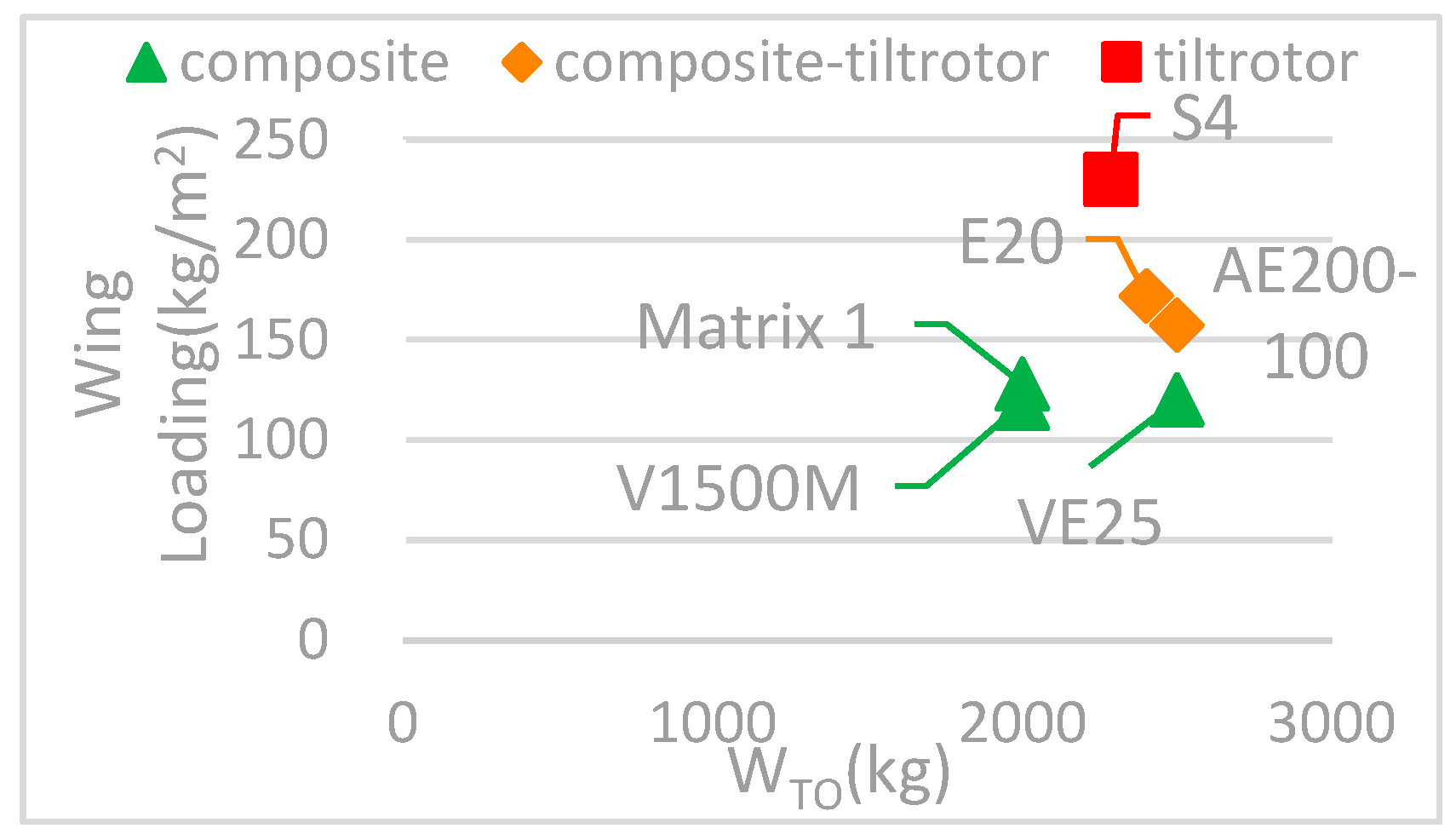
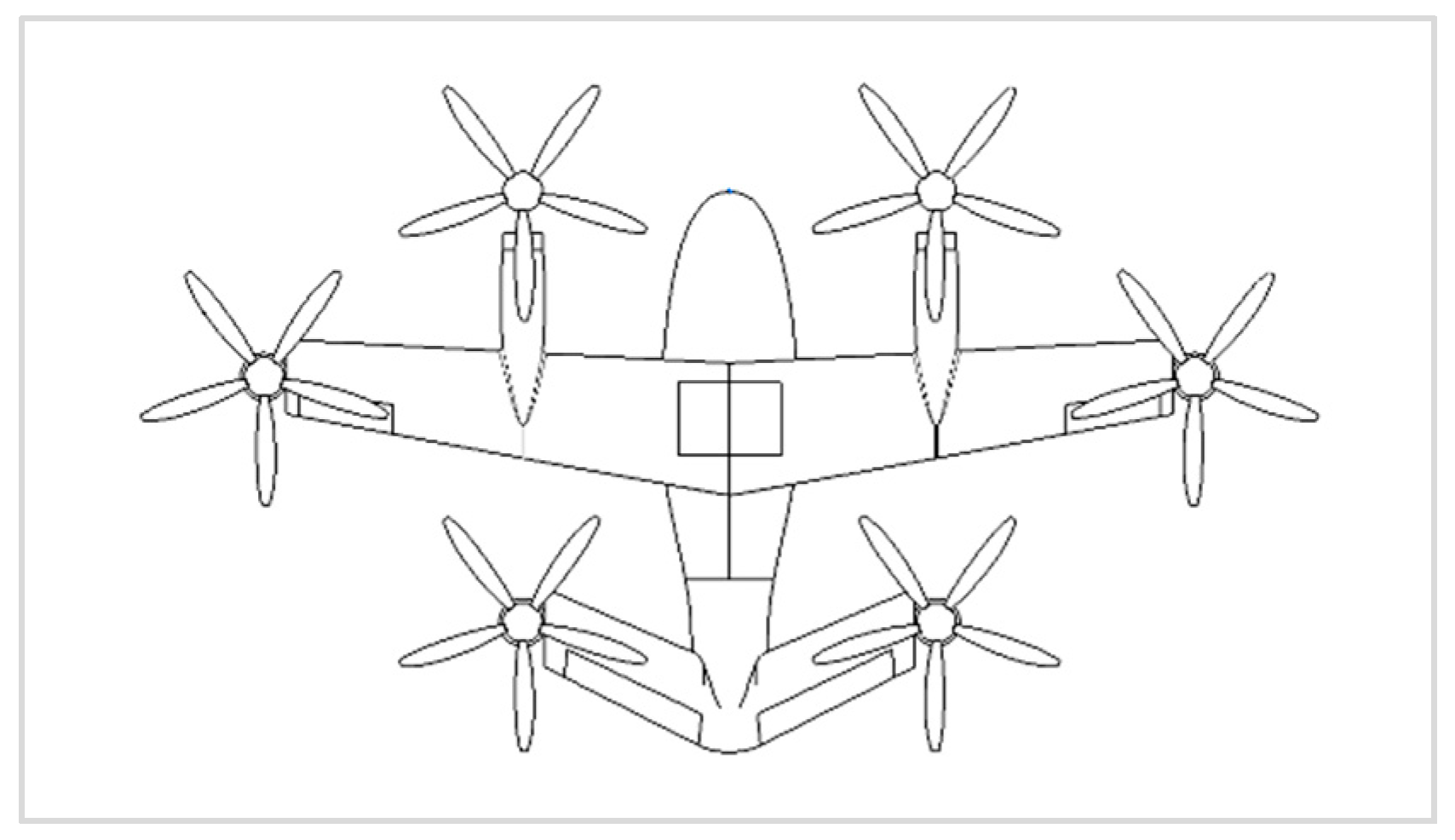
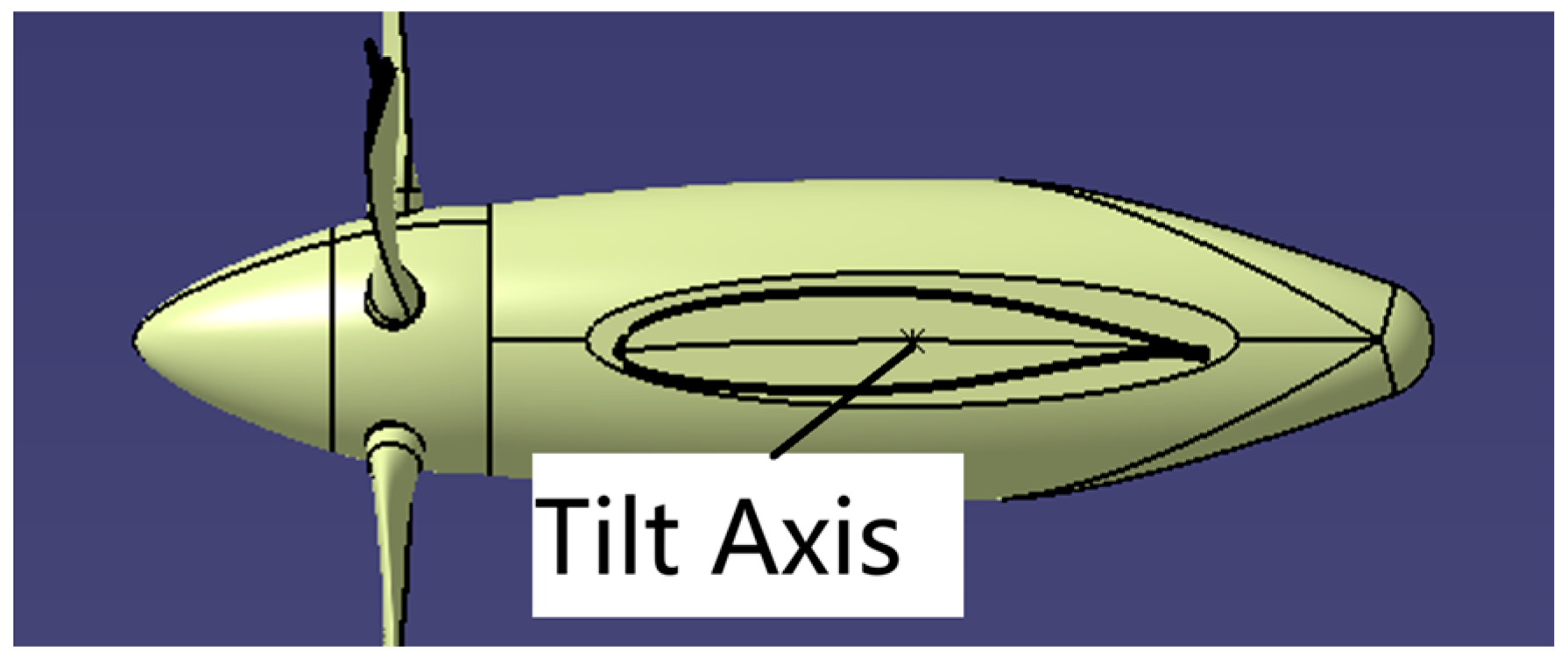

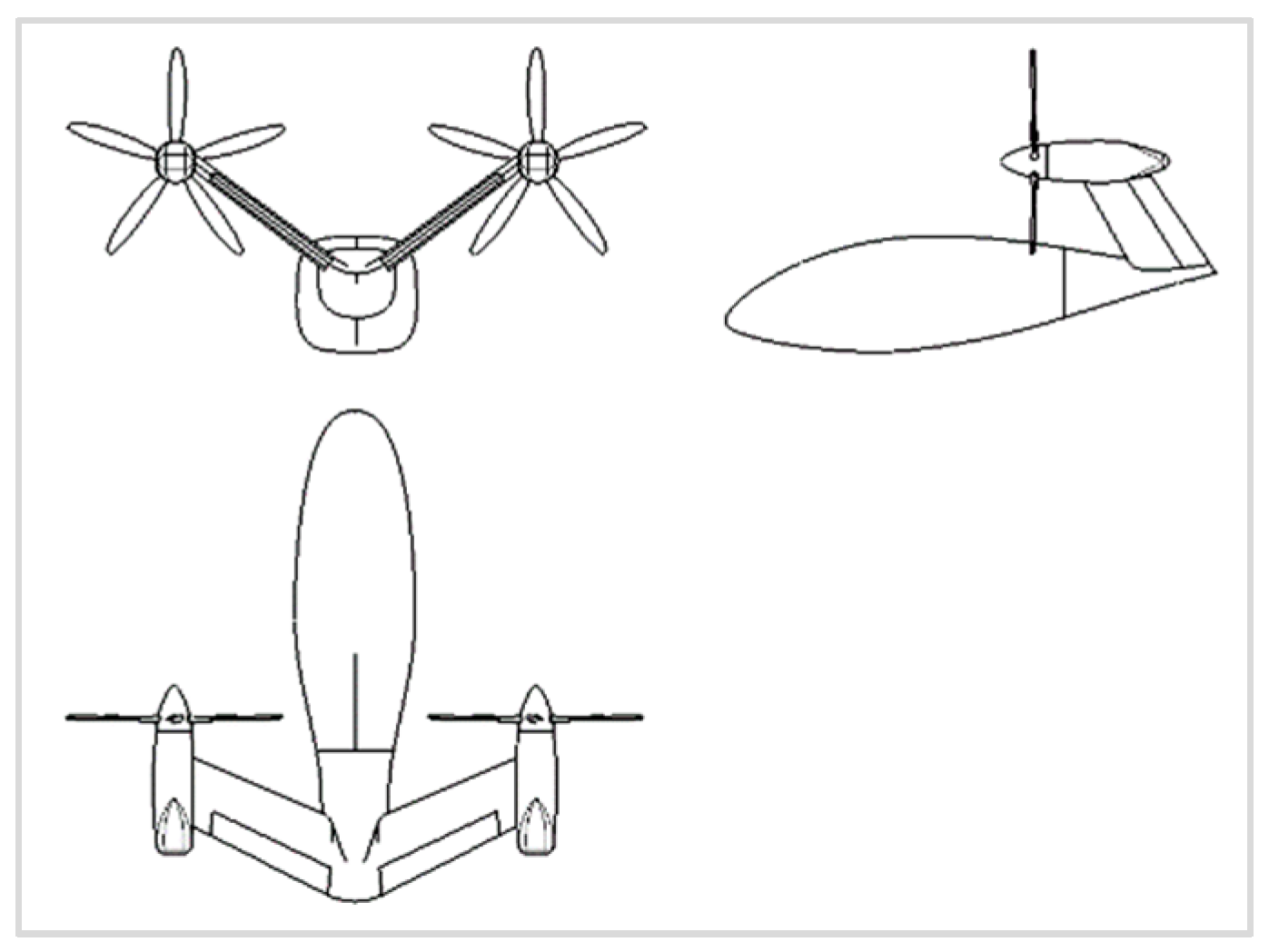

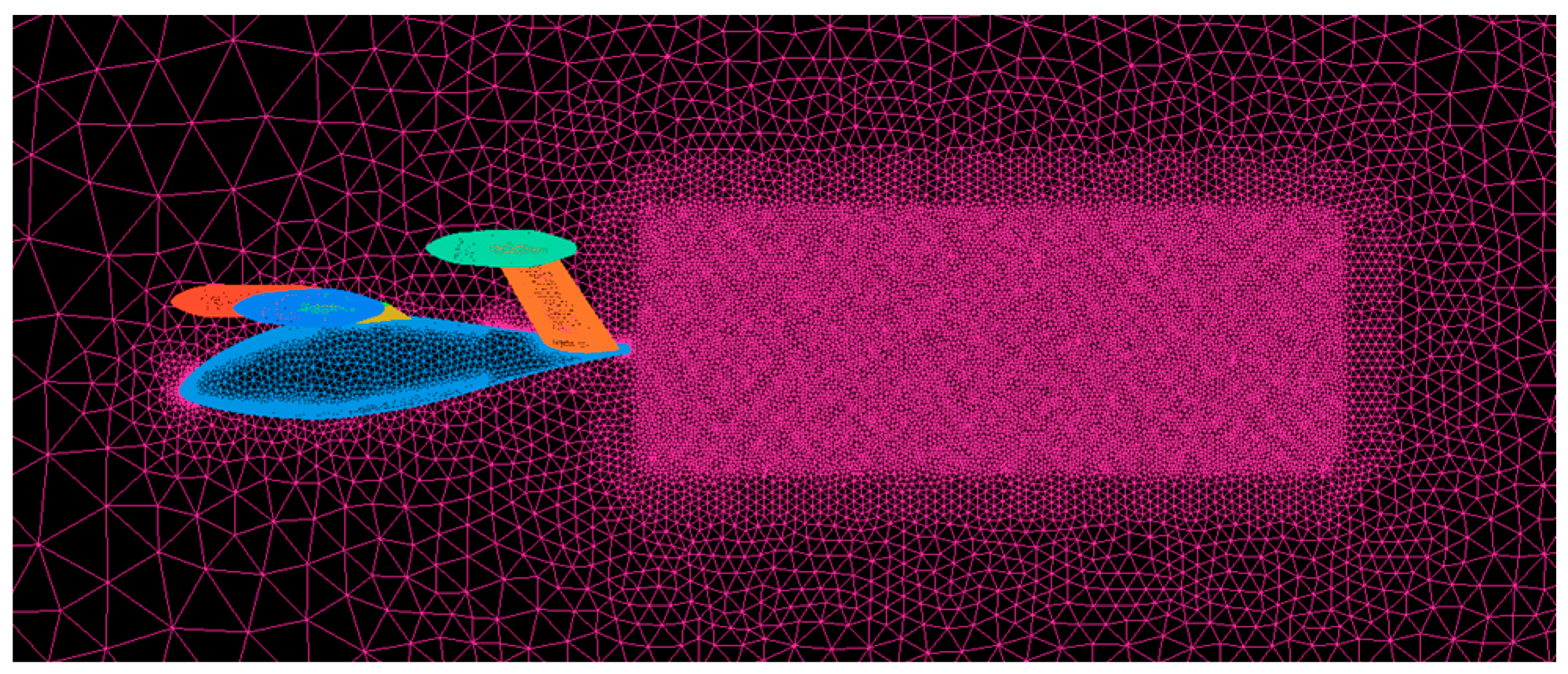

| Airfoil | S (m2) | b (m) | cr (m) | ct (m) | ΛLE (°) | φw (°) |
|---|---|---|---|---|---|---|
| GAW-1 | 9.24 | 10.6 | 0.876 | 0.867 | 3 | 5 |
| NLF(1)-0215F | 10.69 | 10.6 | 1.150 | 0.867 | 3 | 3 |
Disclaimer/Publisher’s Note: The statements, opinions and data contained in all publications are solely those of the individual author(s) and contributor(s) and not of MDPI and/or the editor(s). MDPI and/or the editor(s) disclaim responsibility for any injury to people or property resulting from any ideas, methods, instructions or products referred to in the content. |
© 2025 by the authors. Licensee MDPI, Basel, Switzerland. This article is an open access article distributed under the terms and conditions of the Creative Commons Attribution (CC BY) license (https://creativecommons.org/licenses/by/4.0/).
Share and Cite
Zheng, Y.; Qiao, W.; Wang, X. Aerodynamic Research on the Wing Design of a 3000 kg Hexa Tiltrotor eVTOL. Eng. Proc. 2024, 80, 41. https://doi.org/10.3390/engproc2024080041
Zheng Y, Qiao W, Wang X. Aerodynamic Research on the Wing Design of a 3000 kg Hexa Tiltrotor eVTOL. Engineering Proceedings. 2024; 80(1):41. https://doi.org/10.3390/engproc2024080041
Chicago/Turabian StyleZheng, Yafei, Wei Qiao, and Xinlei Wang. 2024. "Aerodynamic Research on the Wing Design of a 3000 kg Hexa Tiltrotor eVTOL" Engineering Proceedings 80, no. 1: 41. https://doi.org/10.3390/engproc2024080041
APA StyleZheng, Y., Qiao, W., & Wang, X. (2024). Aerodynamic Research on the Wing Design of a 3000 kg Hexa Tiltrotor eVTOL. Engineering Proceedings, 80(1), 41. https://doi.org/10.3390/engproc2024080041






